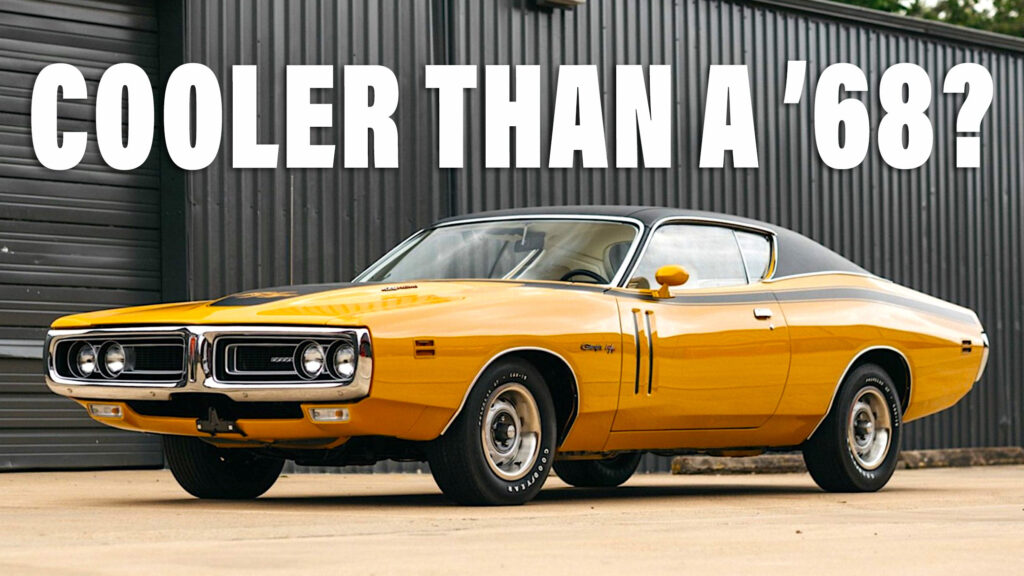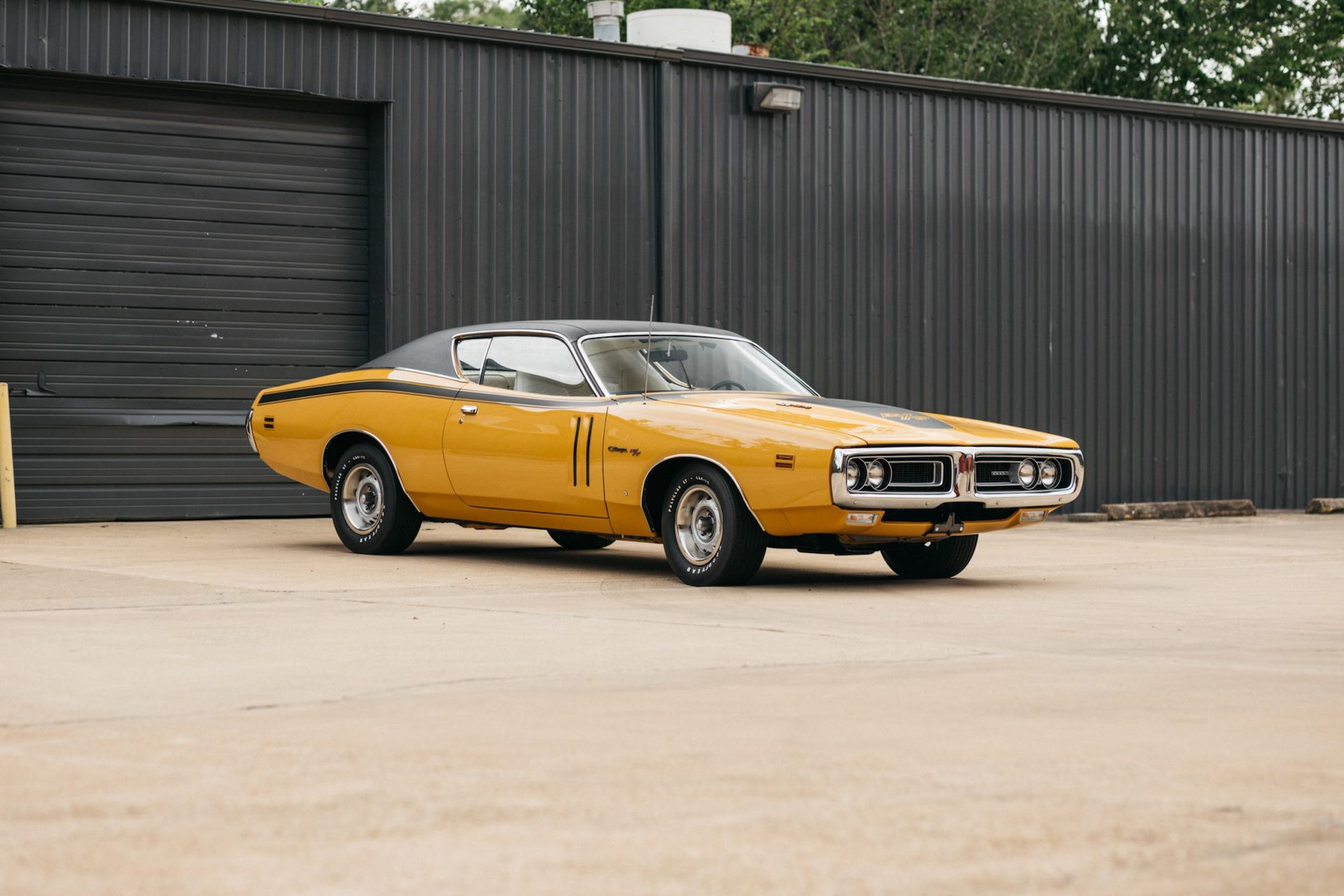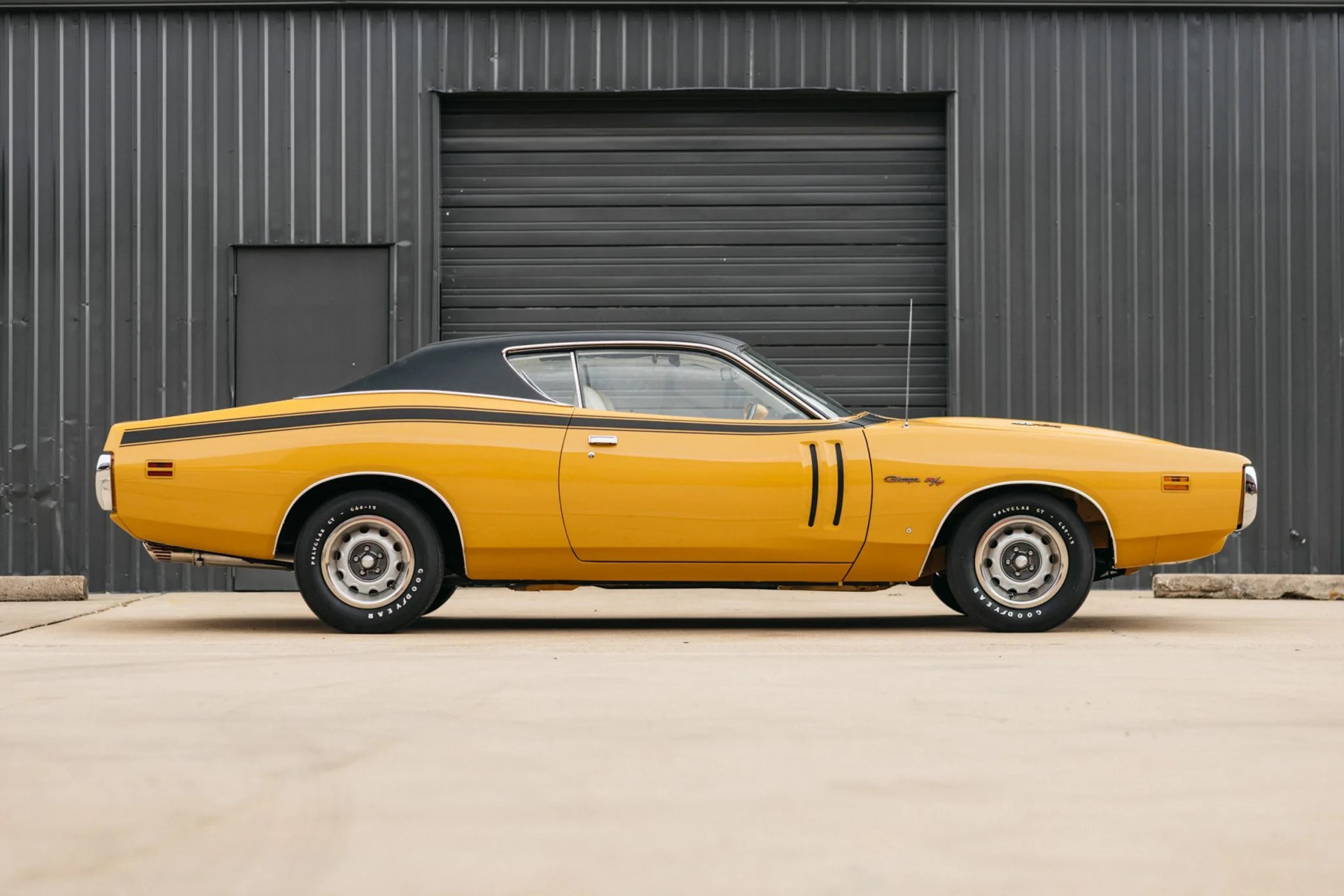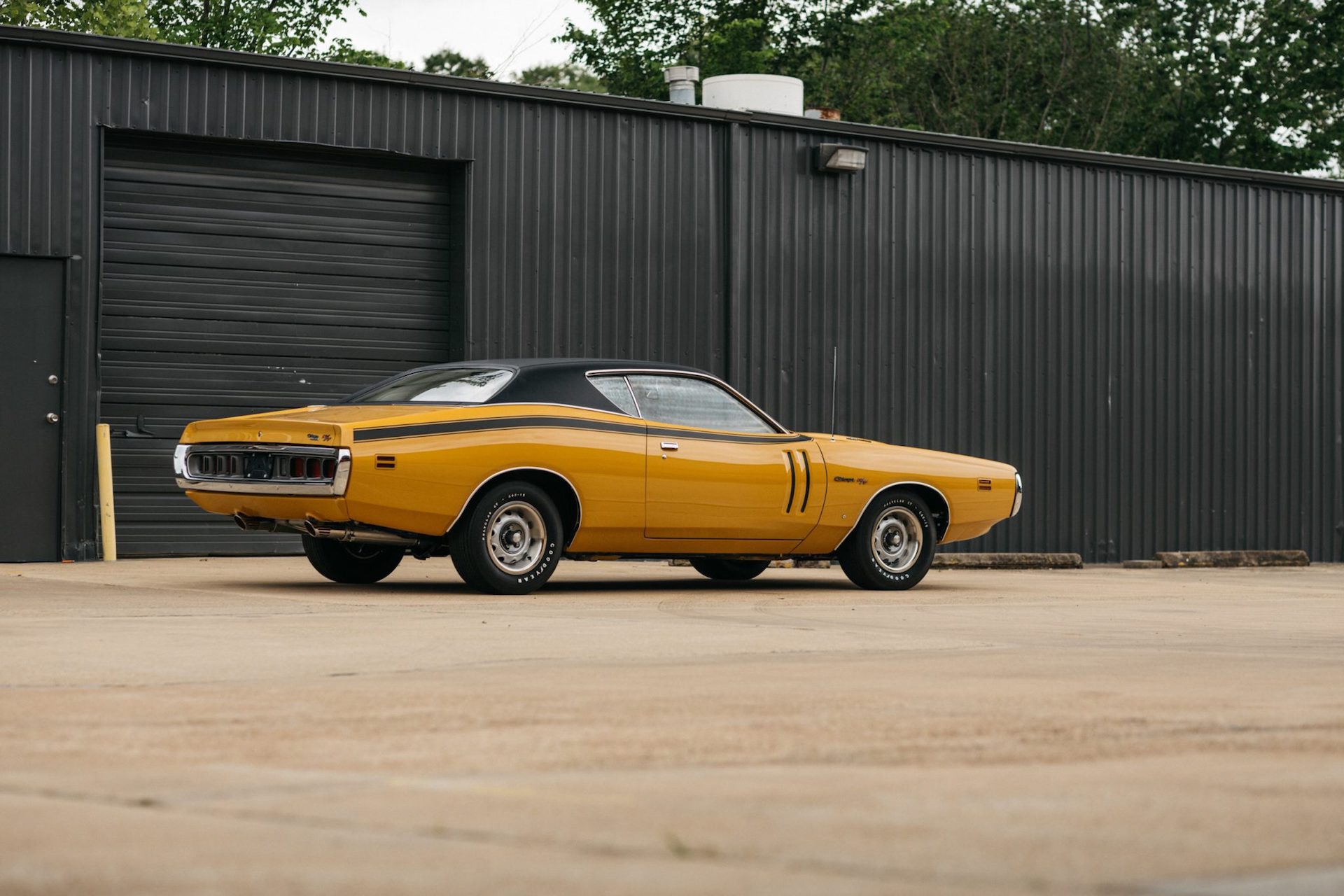Nineteen seventy was the peak of muscle’s golden era, an era that was ended by crippling insurance rates, tightening emissions regulations and performance-unfriendly low-lead gas.
But Detroit didn’t abandon horsepower overnight – some automakers, like Dodge, managed to keep their hottest engines on sale for a 12-month farewell tour, and that 1971 season also brought an entirely new look to the Dodge Charger.
The 1968-70 Charger is an icon, no doubt, but the truth is that its styling was already fairly dated on the day it arrived, the body’s pronounced straight lines having more in common with the design of GM’s 1966-67 intermediates, whose new-for-68 successors had ironically moved on to a fastback design that had more in common with the design of the earlier ’66-67 Chargers. What comes around, and all that.
Related: Watch Stellantis Design Boss Ralph Gilles Hoon His 1,000-HP Dodge Charger
So for 1971 the Charger, along with Chrysler’s other muscle cars, like the Plymouth GTX, gained new voluptuous styling with fastback rear ends, with Dodge’s car differentiated from its Plymouth cousins by a slightly leaner Coke-bottle look. Dodge even offered an optional body-color front bumper, something the Pontiac GTO had introduced three years earlier.
What hadn’t changed was the 425 hp (431 PS) output of the top-spec 426 Hemi, though hardly anyone got the chance to experience its 490 lb-ft (664 Nm) of torque or the Charger’s ability to eat a quarter mile of asphalt in just over 13-seconds. Of the 3,118 R/T Charger hardtops ordered in 1971, as few as 63 seem to have been optioned with the 426, and a good chunk of those would have come with the three-speed Torqueflite automatic, not the four-speed manual fitted to this car. When the Charger returned for 1972, the 426 Hemi was nowhere to be found.
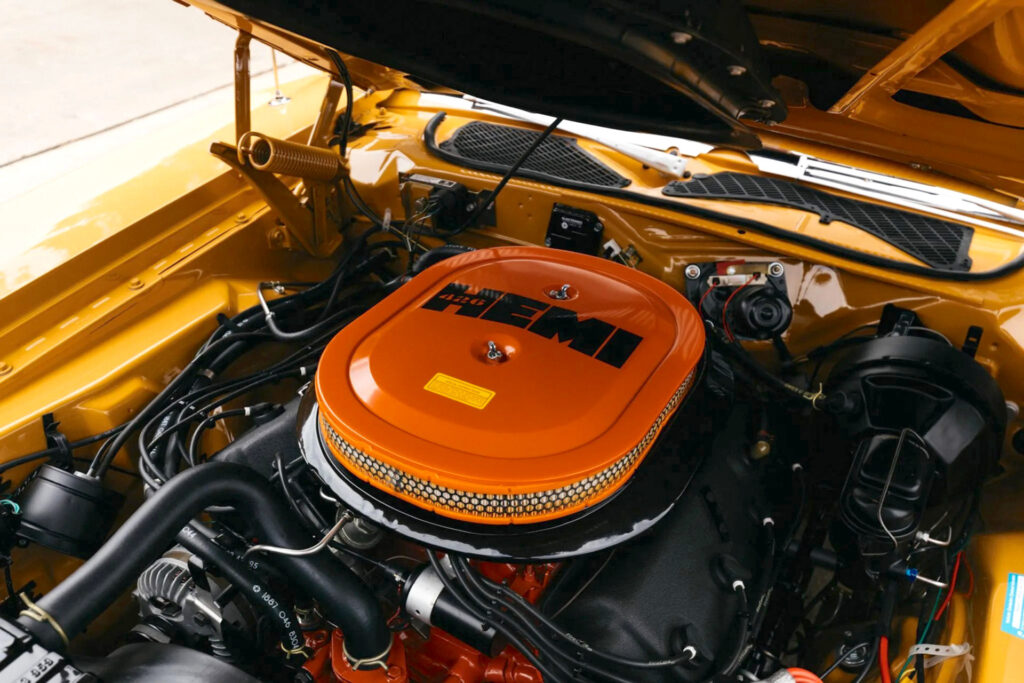
Which makes this ’71 something really special. Repainted in its original Butterscotch during a multi-year restoration that was completed in 2022, this last-of-the-line Charger Hemi looks sensational. Most people would probably say it’s not as attractive as the 1968-70 cars, but you can imagine it making a real impact on the street 52 years ago with its dramatically different look. It also has a ton of cool details, including the rocket-aping exhaust tailpipes and the air-grabber intake in the hood that’s operated by a control under the dash. One thing that seems strange is the lack of a rev counter to help the driver know when to throw that Hurst pistol-grip shifter across the gate.
Another fact that may surprise you is that a 1971 Hemi Charger is actually worth more than a Hemi version of the more famous 1968-70 cars. Hagerty’s price guide suggests around $126,000 for a ’70 in good condition, and $185,000 for the much rarer ’71. But this car, currently being auctioned on Bring-a-Trailer, is definitely not merely in ‘good’ condition, so we can expect it to sell for far more than even that.
Would you take this ’71 Hemi over a ’68-70? Drop a comment below and let us know whether you prefer your Charger with lines or curves.




